Speed up WordPress Website in 9 Easy Steps
Is your WordPress website running sluggishly? Are you looking for ways to speed it up and provide a better user experience for your visitors? In this article, we will guide you through nine easy steps to optimize the speed of your WordPress website. By implementing these techniques, you can enhance the performance of your site, improve its search engine rankings, and retain more visitors. So, let’s get started!
Why is Website Speed Important?
Website speed plays a crucial role in the success of your online presence. Slow-loading websites not only frustrate visitors but also lead to higher bounce rates, decreased conversions, and a negative impact on search engine rankings. Studies have shown that even a one-second delay in page load time can result in a significant drop in customer satisfaction and conversions. Therefore, it’s essential to ensure your WordPress site loads quickly to provide a seamless browsing experience.
Factors Affecting WordPress Speed
Several factors contribute to the speed of a WordPress website. Identifying and addressing these factors is key to optimizing your site’s performance. Here are the primary elements that impact WordPress speed:
Hosting Provider
Choosing a reliable hosting provider is crucial. Opt for a hosting company that offers excellent server performance, reliable infrastructure, and server locations closer to your target audience.
Theme and Plugins
Selecting a lightweight theme and minimizing the number of plugins used on your website will significantly impact its speed. Bloated themes and excessive plugins can slow down your site’s performance.
Image Optimization
Large image file sizes can significantly affect page load times. By optimizing and compressing images without compromising quality, you can reduce their file sizes and boost your website’s speed.
Caching
Caching involves storing frequently accessed data to reduce the time it takes to retrieve information. Utilizing caching mechanisms such as browser caching, server-side caching, and caching plugins can improve your site’s speed.
Database Optimization
Optimizing your WordPress database can enhance its efficiency and speed. Regularly cleaning up and optimizing your database tables can eliminate unnecessary data and improve overall performance.
Code Optimization
Efficient coding practices, such as minimizing CSS and JavaScript files, removing unnecessary code, and utilizing code minification techniques, can significantly improve your website’s loading speed.
Now that we’ve discussed the factors affecting WordPress speed, let’s dive into the nine easy steps to speed up your WordPress website.
Step 1: Choosing a Reliable Hosting Provider
The foundation of a fast-loading WordPress site is a dependable hosting provider. Look for a hosting company that offers optimized servers, a robust infrastructure, and excellent customer support. Ensure they have server locations close to your target audience to minimize latency and maximize speed.
Step 2: Using a Lightweight Theme
Selecting a lightweight theme is crucial for optimizing your website’s speed. Avoid heavy and feature-rich themes that come bundled with numerous unnecessary elements. Instead, choose a minimalistic and well-coded theme that focuses on performance.
Step 3: Minimize Plugins
Using too many plugins can significantly slow down your WordPress website. Evaluate the plugins you have installed and remove any unnecessary or redundant ones. Keep only the essential plugins that provide vital functionality for your site. Additionally, choose plugins that are well-coded and regularly updated by their developers to ensure compatibility and optimal performance.
Step 4: Optimize Images
Images often contribute to the bulk of a web page’s size, leading to slower loading times. Optimize your images by resizing them to the appropriate dimensions and compressing them without compromising quality. You can use image optimization plugins or online tools to automate this process and reduce the file sizes, allowing your website to load faster.
Step 5: Implement Caching
Caching is a technique that stores static versions of your web pages, reducing the need to generate them dynamically for each visitor. By implementing caching mechanisms, you can significantly improve your site’s speed. Enable browser caching, which instructs visitors’ browsers to store certain elements of your site locally, reducing the need to fetch them from the server with each visit. Additionally, consider using server-side caching and caching plugins to further optimize your website’s performance.
Step 6: Optimize the Database
Regularly optimizing your WordPress database can improve its efficiency and speed. Use plugins or manual techniques to clean up unnecessary data, such as post revisions, spam comments, trashed content, and expired transients. Optimizing your database tables will reduce their size and improve the overall performance of your website.
Step 7: Code Optimization
Optimizing your website’s code is essential for enhancing its speed. Minimize the use of external CSS and JavaScript files by combining and compressing them. Remove any unnecessary code or plugins that may add extra weight to your site. Utilize code minification techniques to reduce file sizes and improve loading times.
Step 8: Utilize Content Delivery Networks (CDNs)
Content Delivery Networks (CDNs) distribute your website’s static files, such as images, CSS, and JavaScript, across multiple servers worldwide. This geographical distribution ensures that your content is delivered to visitors from a server closest to their location, reducing latency and improving loading times. Utilize a reputable CDN service to leverage this technology and speed up your WordPress site.
Step 9: Regular Maintenance and Updates
Regularly maintaining your WordPress website and keeping it up to date is crucial for optimal performance. Update your WordPress core, theme, and plugins to the latest versions, as developers often release updates that include bug fixes, security patches, and performance improvements. Regularly audit your site for outdated or unused plugins and themes, and remove them to avoid unnecessary bloat.
In conclusion, speeding up your WordPress website is vital for delivering an excellent user experience and improving your site’s performance. By following these nine easy steps, including choosing a reliable hosting provider, using a lightweight theme, minimizing plugins, optimizing images, implementing caching, optimizing the database, code optimization, utilizing CDNs, and regular maintenance and updates, you can significantly enhance your website’s speed and provide a seamless browsing experience for your visitors.
Conclusion
Improving the speed of your WordPress website is crucial for ensuring optimal user experience and maximizing its potential. By implementing the nine easy steps discussed in this article, you can enhance the performance of your site, decrease loading times, and boost your search engine rankings. Remember to choose a reliable hosting provider, use lightweight themes and minimal plugins, optimize images, implement caching mechanisms, optimize the database and code, utilize CDNs, and regularly maintain and update your website for optimal results.
Now that you have the tools to speed up your WordPress site, take action and optimize your website today. By following these steps, you’ll be able to provide a seamless and fast browsing experience for your visitors, leading to increased user engagement, higher conversions, and improved overall website success. Don’t let a slow-loading website hold you back; take control of your WordPress speed today.
Frequently Asked Questions (FAQs)
1. How do I know if my WordPress site is slow?
If you notice long loading times, frequent timeouts, high bounce rates, or receive complaints from visitors about slow performance, chances are your WordPress site is running slowly.
2. Is shared hosting suitable for a fast WordPress site?
Shared hosting can be sufficient for small or low-traffic websites, but for optimal speed and performance, it’s recommended to upgrade to a more powerful hosting option like VPS or managed WordPress hosting.
3. Can I speed up my WordPress site without technical expertise?
Yes, you can follow the steps outlined in this article even if you don’t have technical expertise. Many optimizations can be achieved through user-friendly plugins and simple configuration settings.
4. How often should I optimize my WordPress database?
Regular database optimization is recommended, ideally on a monthly basis. This will help maintain optimal performance and keep your site running smoothly.
5. What should I do if I encounter compatibility issues after optimizing my site?
Compatibility issues may arise when optimizing your site. Ensure that you have backups in place and proceed with caution. If compatibility issues occur, revert the changes and consider seeking professional assistance.
By following these nine easy steps, you can speed up your WordPress website and provide a seamless browsing experience for your visitors. Remember to choose a reliable hosting provider, use lightweight themes and minimal plugins, optimize images, implement caching mechanisms, optimize the database and code, utilize CDNs, and regularly maintain and update your website. Take action today, and witness the significant improvements in your site’s speed and performance.


